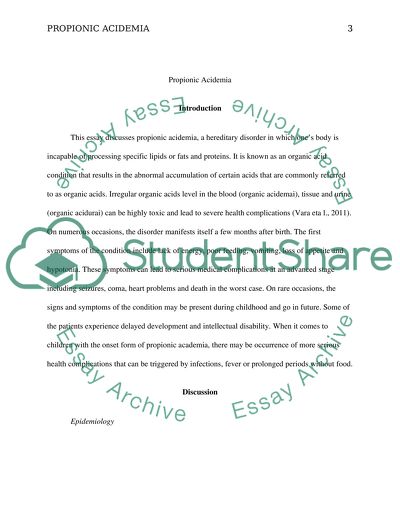Propionic Acidemia Research Paper Example | Topics and Well Written Essays - 750 words. Retrieved from https://studentshare.org/nursing/1498523-propionic-acidemia
Propionic Acidemia Research Paper Example | Topics and Well Written Essays - 750 Words. https://studentshare.org/nursing/1498523-propionic-acidemia.


